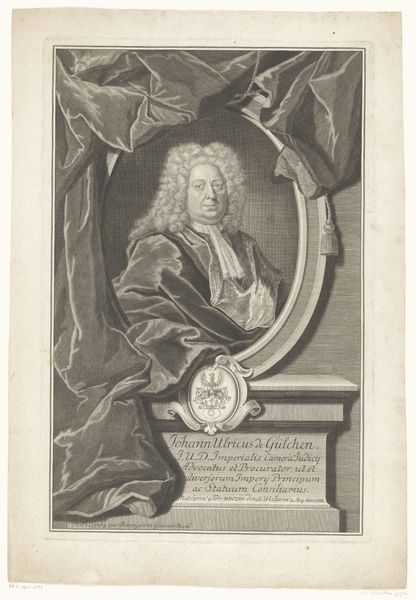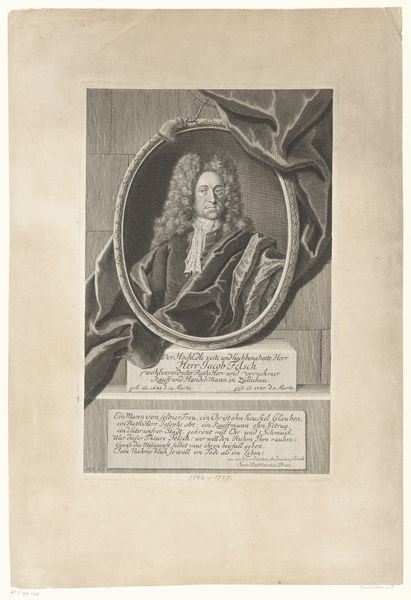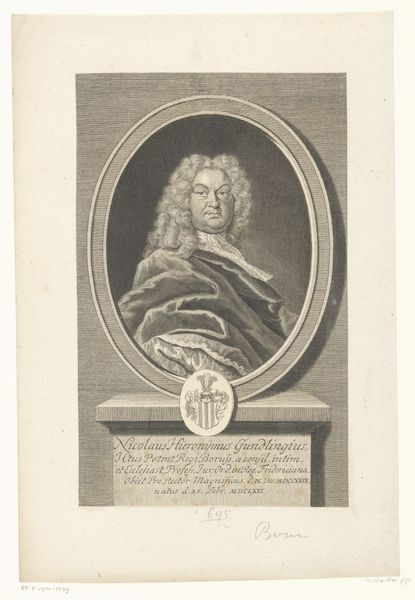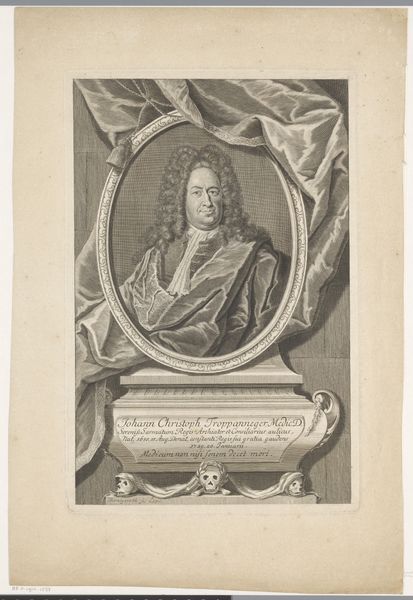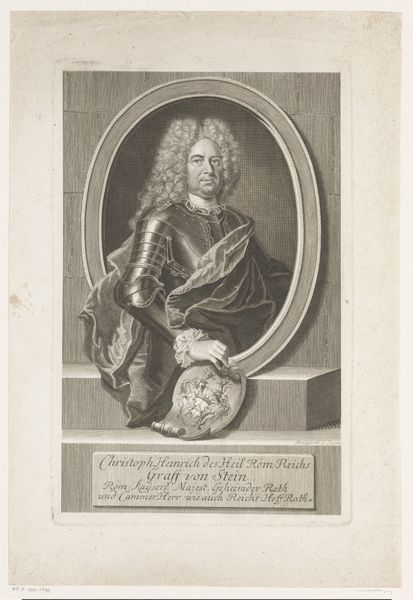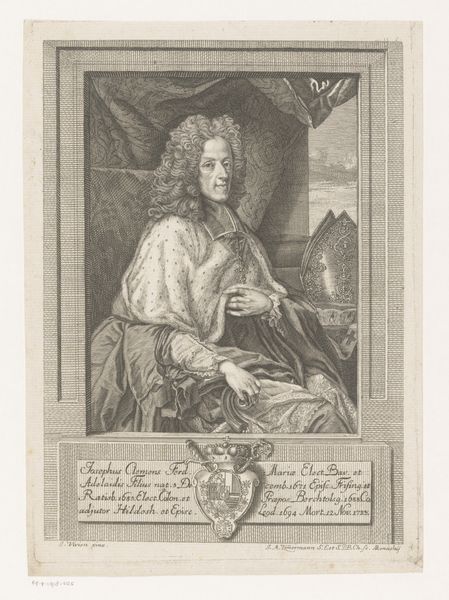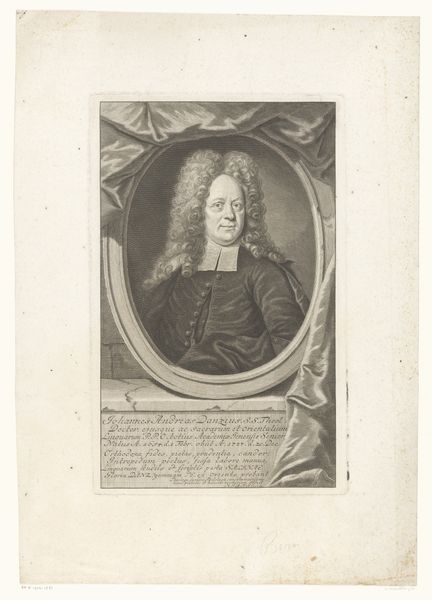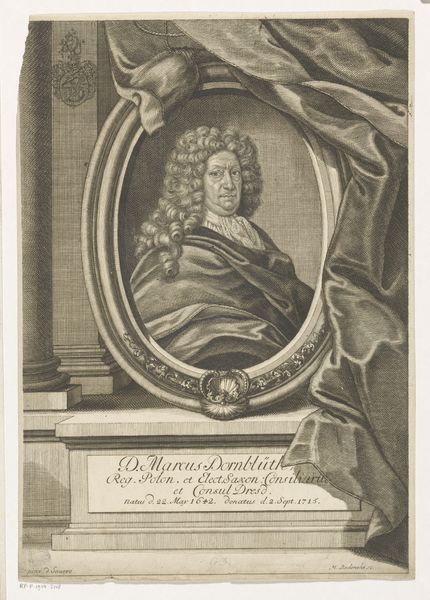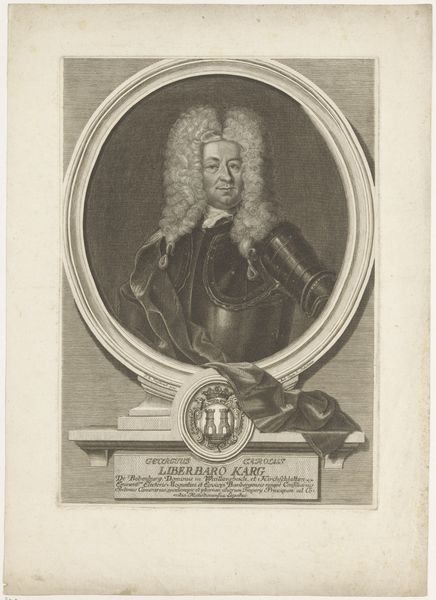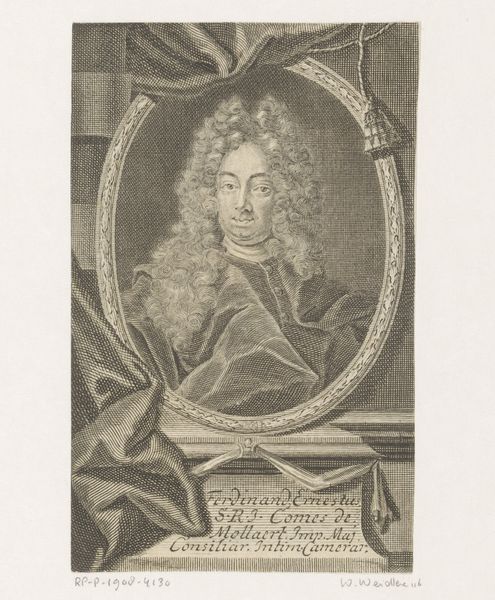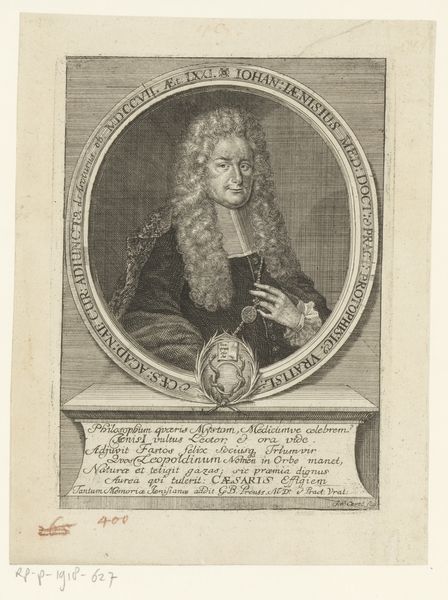
Portret van Jakob Heinrich Pfannenschmidt Possibly 1719 - 1738
0:00
0:00
print, engraving
#
portrait
#
baroque
# print
#
history-painting
#
engraving
Dimensions: height 292 mm, width 206 mm
Copyright: Rijks Museum: Open Domain
Curator: This is a portrait of Jakob Heinrich Pfannenschmidt. It's an engraving, likely made between 1719 and 1738, now held in the Rijksmuseum. Editor: The immediate feeling is one of self-importance and wealth. That cascade of fabric framing him—almost like he's unveiled on a stage! What do you know of Pfannenschmidt himself? Curator: Pfannenschmidt was a prominent figure. As the text at the bottom notes, he was the appointed mayor of the old city of Reddinnina, and also a highly regarded doctor. So a man of politics and science, with the corresponding level of social standing. Editor: Absolutely. The way his coat-of-arms is prominently displayed signals the importance of lineage and family standing, an instant declaration of status. Note how it's been artfully worked into the design. Curator: Coats-of-arms often operate in that way; as visual shorthand of a family’s history and their aspirations. Its prominence, coupled with his intense gaze, creates an immediate sense of command and purpose. The whole image is carefully designed to project power, isn't it? Editor: And that baroque framing... that oval enclosing him is not merely a decorative choice. I read it as symbolic containment, of a carefully curated persona. That era clearly understood image management, how much of a statement this all made. Curator: Indeed. The choice of engraving is interesting in itself. The process allows for incredible detail but is time-consuming, a significant investment suggesting how seriously the portrayed took his public image. Think too of the cost of the paper itself, another symbol of wealth and taste. Editor: It’s fascinating to think about how such seemingly simple details accumulate to tell a bigger story about the person depicted. It gives a more detailed view into what their aspirations were, as much as it told the viewers the same things! Curator: Precisely. And by extension, understanding that projection is invaluable to understanding that period and what power structures it sustained. Editor: A fine point to keep in mind. Makes me look at modern portraiture, wondering what future scholars might deduce from today's carefully curated online identities!
Comments
No comments
Be the first to comment and join the conversation on the ultimate creative platform.
